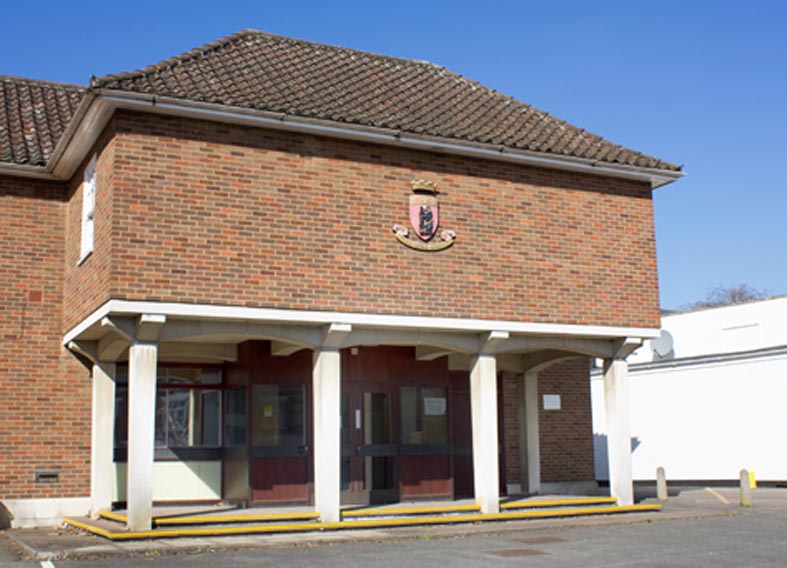In 1227 the Prior of Coventry obtained a statute allowing Southam a weekly market, thereby giving it Town status. Because of its market town status, Southam was chosen for the location of a Magistrates Court for the area.
I was appointed as a Justice of the Peace (JP) in 1979 and served on the Southam Bench for ten years. Before my appointment, the Southam Division had five JPs and was chaired by Sir Charles Shuckburgh, who had been appointed in 1946. When I and two other new Justices were appointed, I was the only one living in Southam. During the 1980s two or three more Southam residents were appointed as JPs for this area.
As well as the dispensation of law in local criminal cases, a JP’s duties included providing a signature to support applications made by members of the public such as for gun licenses and passports. Having a JP living in the town made it more convenient for residents to get their applications signed. Similarly, the police appreciated having a local JP when support for a particular course of action was required.
The work of the Southam Bench was organised by a Clerk to the Court, who was also Clerk to the Rugby Bench. The Southam Bench heard local adult cases every Monday morning and each JP, after appropriate training, was expected to sit every other Monday. The juvenile and family courts serving Southam were usually held at Rugby on Thursdays. JPs undertook further training before serving on these specialist courts, and Southam magistrates were included in the rotas. At the time of my appointment, I was surprised that female Justices were expected to wear hats in court – this convention did not survive for long after 1979.
Southam Magistrates Court was built in the early 1960s. The courtroom had a large seating area for members of the prosecution, individuals charged with offences, their legal and other representatives, witnesses and interested members of the public. Facing them was the raised desk (known as the bench) at which usually three JPs sat to hear cases brought to the court. In charge of proceedings was the chairman of the bench, who sat between the two other JPs. On the left and to the front of the bench was the witness box from which defendants responded to the charge(s) put to them by the Clerk. To the right of the bench was the special raised witness box reserved for charged defendants who had been detained by the police.
Cross-examination followed the statement of the charge(s) and pleas entered by the defendant(s). The magistrates were presented with statements and evidence to be considered by the court from the prosecution, the defendant(s), the witnesses and any legal representatives present. Questions from the bench were asked through the chairman.
At the end of formal proceedings, the three magistrates retired to the room at the rear of the court to consider their verdict. The Clerk would provide extra legal advice if required. After coming to a decision the three magistrates returned to the bench for the chairman to announce the verdict to those present in the courtroom.
In uncontested cases with no legal representation, the Clerk usually asked the defendant if he/she wished to tell the bench, in his/her own words, what happened at the time of the alleged offence. Some defendants did not find this easy, but I recall a case in which an elderly defendant charged with driving without due care and attention said very clearly to the court –“I was driving from our side road out on to the main road on the way to the Co-op and, as usual, asked my wife if it was safe to pull out. She replied “Yes, OK – – – after this police car passes.” I heard her full instruction just after I hit the side of the police car.” I remember an understanding smile creasing my face. No-one was hurt and there was no intention to break the law, and knowing the people and the area well certainly helped us come to a decision on what to do on this occasion.
Many cases were not so clear-cut and required very careful consideration. Sometimes being part of the community made this personally difficult for local JPs, but I am convinced that this was outweighed by the local knowledge that ensured justice was better served. I also believe it helped when members of the bench knew how the local police force and other agencies interacted with the community.
I was saddened when Southam Magistrates Court closed in 1989. Although I could have moved to the bench in Leamington or Rugby, I declined the offer and decided to resign as a JP. Southam and the villages in this area keep expanding rapidly. It will be interesting to see how the decisions taken to merge courts and police teams affect us all in the future.
By Bransby Thomas
Our new exhibition ‘Southam Bobbies’ is now open, and its theme is the history of Policing in the Southam area. For more information, see our website www.southamheritage.org or visit the museum in Tithe Place on Tuesday, Friday and Saturday mornings 10am to 12 noon. Telephone 01926 613503 email southamheritage@hotmail.com and find us on Facebook.


Leave A Comment